PhysicalObjectGroup class#
- class laygo2.object.physical.PhysicalObjectGroup(xy, name=None, params=None, elements=None)[source]#
Bases:
IterablePhysicalObjectA class for grouped physical objects, designed to be generated as a group in Cadence Virtuoso (currently not implemented).
Public Data Attributes:
Inherited from
IterablePhysicalObjectInherited from
PhysicalObjectObject name.
Physical coordinate values of the object in the form of [bottom_left, top_right].
Master ojbect for current object (for arrays and pins).
Dictionary storing the parameters associated with the object
The dictionary containing the key-value pairs of the major physical coordinates of the object, such as 'left', 'right', 'top', 'bottom', 'bottom_left', 'center', etc.
The left-center coordinate of the object.
The right-center coordinate of the object.
The top-center coordinate of the object.
The bottom-center coordinate of the object.
The center-center coordinate of the object.
The bottom-left coordinate of the object.
The bottom-right coordinate of the object.
The top-left coordinate of the object.
The top-right coordinate of the object.
The physical bounding box of the object.
Public Methods:
Get object information summary.
__init__(xy[, name, params, elements])The constructor function.
Inherited from
IterablePhysicalObject__init__(xy[, name, params, elements])The constructor function.
__getitem__(pos)Return the sub-elements of the object, based on the pos parameter.
__setitem__(pos, item)Update the sub-elements of the object, based on the pos and item parameters.
__iter__()Iterator that maps directly to the elements attribute of this object.
__next__()Iterator that maps directly to the iterator function of the elements attribute of this object.
Enumerate over the element array.
Inherited from
PhysicalObject
- __init__(xy, name=None, params=None, elements=None)[source]#
The constructor function.
- Parameters:
xy (numpy.ndarray(dtype=int)) – The coordinate of this object represented as a Numpy array [x, y].
name (str, optional) – The name of the object.
params (dict or None) – The dictionary that contains the parameters of this object, with parameter names as keys.
elements (numpy.ndarray(dtype=LayoutObject) or None) – The iterable elements of the object.
- _get_xy()#
numpy.ndarray(dtype=numpy.int): Retrive x,y coordinate values of the object.
- _set_xy(value)#
numpy.ndarray(dtype=numpy.int): Update x,y coordinates of the object.
- _update_elements(xy_ofst)#
Update the xy coordinates of the elements of this object, used internally by the _set_xy() function.
- _update_pointers()#
The internal function that updates the object’s pointers after a change in its physical coordinates.
- ndenumerate()#
Enumerate over the element array. Calls np.ndenumerate() of the elements of this object.
- _xy = array([0, 0])#
The x and y coordinate values stored within.
- Type:
numpy.ndarray(dtype=numpy.int)
- property bbox#
The physical bounding box of the object.
Example
>>> import laygo2 >>> obj = laygo2.object.physical.PhysicalObject(xy = [[0, 0], [200, 200]]) >>> obj.bbox array([[ 0, 0], [200, 200]])

- Type:
- bottom = None#
The bottom-center coordinate of the object.
Example
>>> import laygo2 >>> obj = laygo2.object.physical.PhysicalObject(xy = [[0, 0], [200, 200]]) >>> obj.top array([100, 0])

- Type:
- bottom_left = None#
The bottom-left coordinate of the object.
Example
>>> import laygo2 >>> obj = laygo2.object.physical.PhysicalObject(xy = [[0, 0], [200, 200]]) >>> obj.bottom_left array([ 0, 0])

- Type:
- bottom_right = None#
The bottom-right coordinate of the object.
Example
>>> import laygo2 >>> obj = laygo2.object.physical.PhysicalObject(xy = [[0, 0], [200, 200]]) >>> obj.bottom_right array([200, 0])
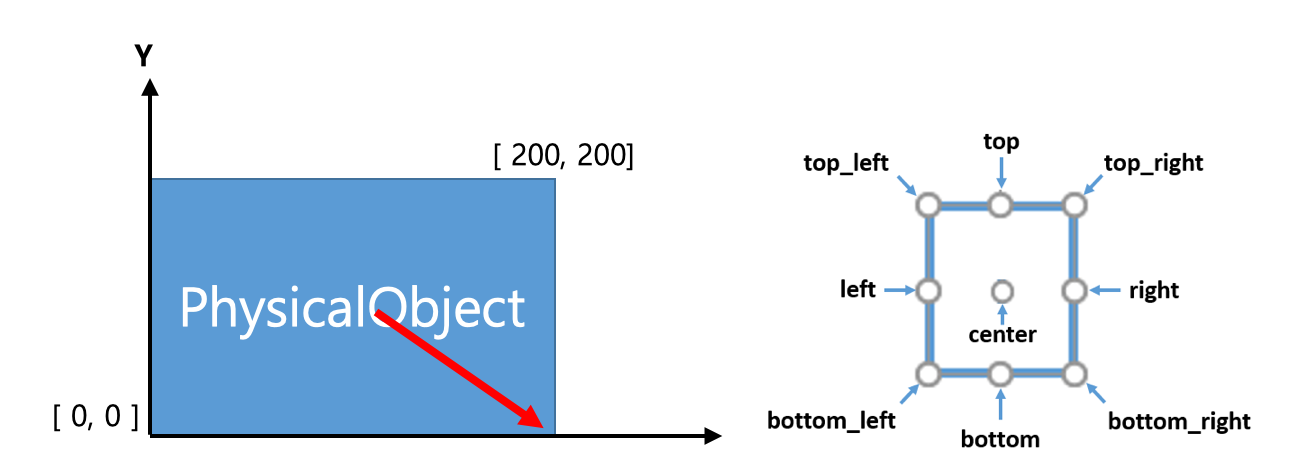
- Type:
- center = None#
The center-center coordinate of the object.
Example
>>> import laygo2 >>> obj = laygo2.object.physical.PhysicalObject(xy = [[0, 0], [200, 200]]) >>> obj.center array([100, 100])

- Type:
- elements = None#
Numpy array containing its element objects.
Example
>>> import laygo2 >>> phy0 = laygo2.object.physical.PhysicalObject(xy=[[0, 0], [100, 100]]) >>> phy1 = laygo2.object.physical.PhysicalObject(xy=[[0, 0], [200, 200]]) >>> phy2 = laygo2.object.physical.PhysicalObject(xy=[[0, 0], [300, 300]]) >>> element = [phy0, phy1, phy2] >>> iphy0 = laygo2.object.physical.IterablePhysicalObject( xy=[[0, 0], [300, 300]], elements = elements) >>> iphy0.elements array([<laygo2.object.physical.PhysicalObject object at 0x000002049A77FDF0>, <laygo2.object.physical.PhysicalObject object at 0x000002049A77F3D0>, <laygo2.object.physical.PhysicalObject object at 0x000002049A77FF40>], dtype=object)
- Type:
- left = None#
The left-center coordinate of the object.
Example
>>> import laygo2 >>> obj = laygo2.object.physical.PhysicalObject(xy = [[0, 0], [200, 200]]) >>> obj.left array([ 0, 100])

- Type:
- master = None#
Master ojbect for current object (for arrays and pins).
Example
>>> import laygo2 >>> obj1 = laygo2.object.physical.PhysicalObject(xy = [[0, 0], [200, 200]], name="test1", params=None) >>> obj2 = laygo2.object.physical.Pin(xy = [[0, 0], [100, 100]], layer = ["M1", "drawing"], master=obj1) >>> obj2.master <laygo2.object.physical.PhysicalObject object at 0x00000204AAF3C7C0>
- Type:
- name = None#
Object name.
Example
>>> import laygo2 >>> obj = laygo2.object.physical.PhysicalObject(xy = [[0, 0], [200, 200]], name="test", params={'maxI': 0.005}) >>> obj.name “test”
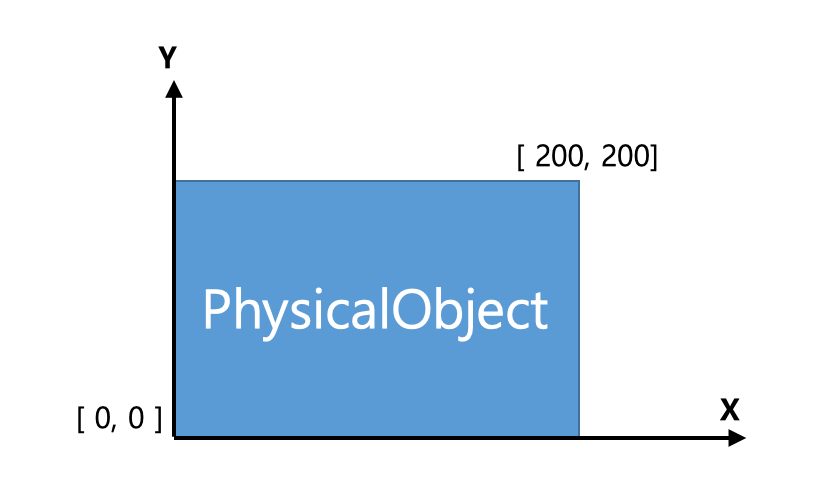
- Type:
- params = None#
Dictionary storing the parameters associated with the object
Example
>>> import laygo2 >>> obj = laygo2.object.physical.PhysicalObject(xy = [[0, 0], [200, 200]], name="test", params={'maxI': 0.005}) >>> obj.params {‘maxI’: 0.005 }
- Type:
- pointers = None#
The dictionary containing the key-value pairs of the major physical coordinates of the object, such as ‘left’, ‘right’, ‘top’, ‘bottom’, ‘bottom_left’, ‘center’, etc.
Example
>>> import laygo2 >>> obj = laygo2.object.physical.PhysicalObject(xy = [[0, 0], [200, 200]]) >>> obj.pointers {'left': array([0, 100]), 'right': array([200, 100]), 'bottom': array([100, 0]), 'top': array([100, 200]), 'bottom_left': array([0, 0]), 'bottom_right': array([200, 0]), 'top_left': array([0, 200]), 'top_right': array([200, 200]), ‘center’: array( [100, 100] ) }

- Type:
- right = None#
The right-center coordinate of the object.
Example
>>> import laygo2 >>> obj = laygo2.object.physical.PhysicalObject(xy = [[0, 0], [200, 200]]) >>> obj.right array([200, 100])
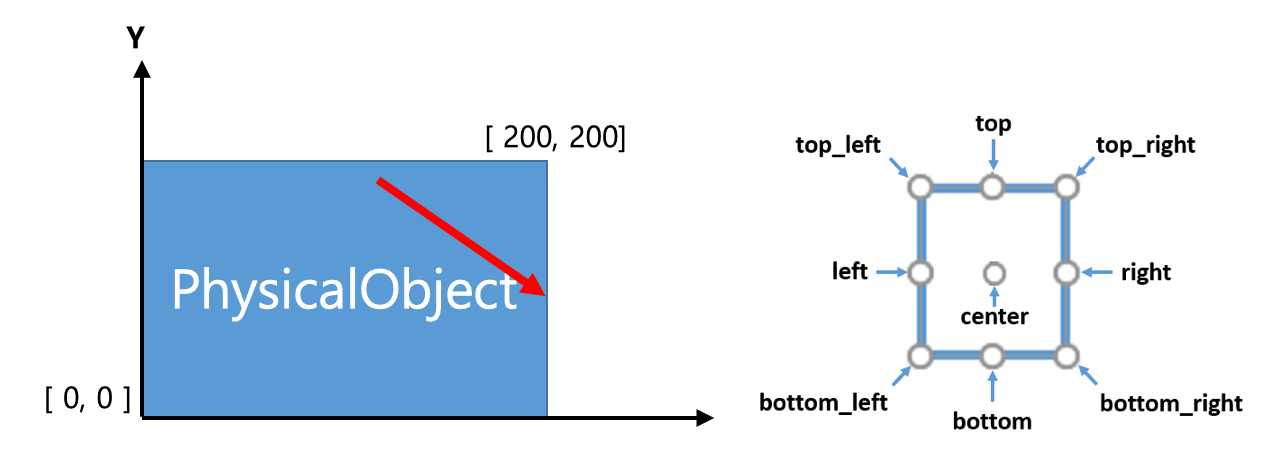
- Type:
- property shape#
Array size of the object.
Example
>>> import laygo2 >>> phy0 = laygo2.object.physical.PhysicalObject(xy=[[0, 0], [100, 100]]) >>> phy1 = laygo2.object.physical.PhysicalObject(xy=[[0, 0], [200, 200]]) >>> phy2 = laygo2.object.physical.PhysicalObject(xy=[[0, 0], [300, 300]]) >>> element = [phy0, phy1, phy2] >>> iphy0 = laygo2.object.physical.IterablePhysicalObject( xy=[[0, 0], [300, 300]], elements = elements) >>> iphy0.shape array([3])
- top = None#
The top-center coordinate of the object.
Example
>>> import laygo2 >>> obj = laygo2.object.physical.PhysicalObject(xy = [[0, 0], [200, 200]]) >>> obj.top array([100, 200])
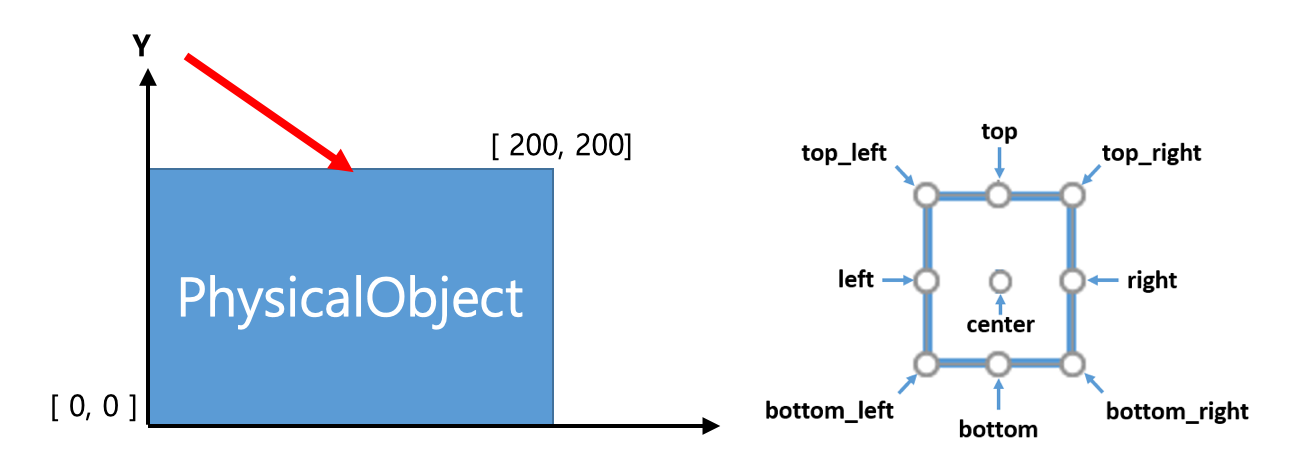
- Type:
- top_left = None#
The top-left coordinate of the object.
Example
>>> import laygo2 >>> obj = laygo2.object.physical.PhysicalObject(xy = [[0, 0], [200, 200]]) >>> obj.top_left array([ 0, 200])
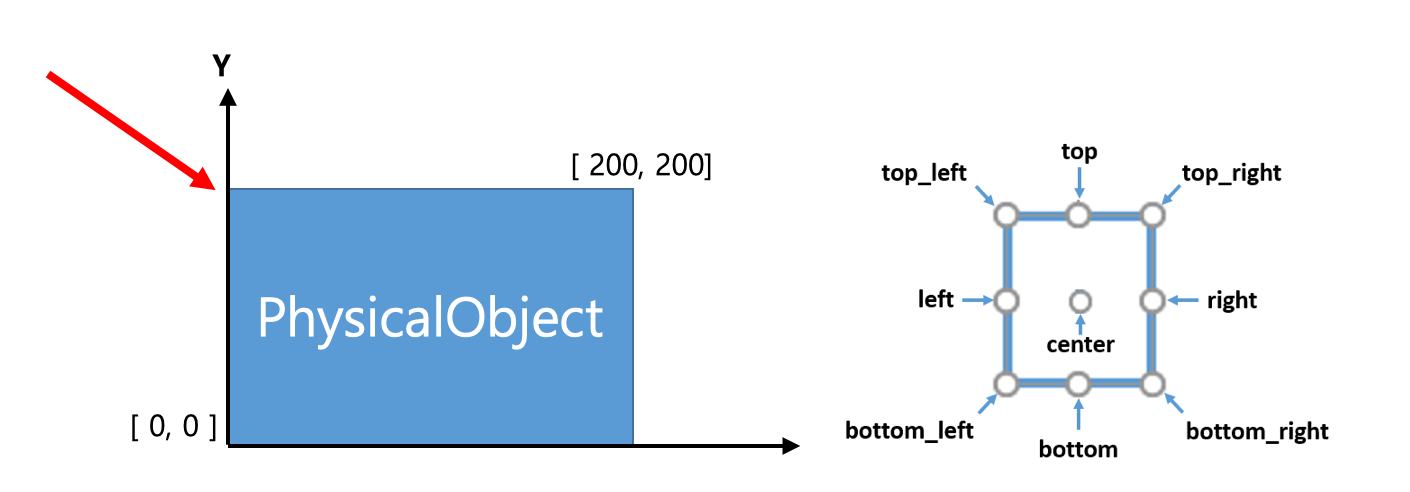
- Type:
- top_right = None#
The top-right coordinate of the object.
Example
>>> import laygo2 >>> obj = laygo2.object.physical.PhysicalObject(xy = [[0, 0], [200, 200]]) >>> obj.top_right array([200, 200])

- Type:
- property xy#
Retrive x,y coordinate values of the object.
- Type:
numpy.ndarray(dtype=numpy.int)
